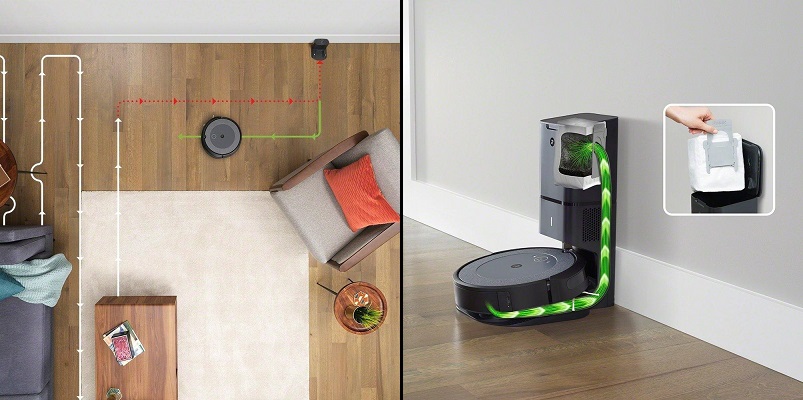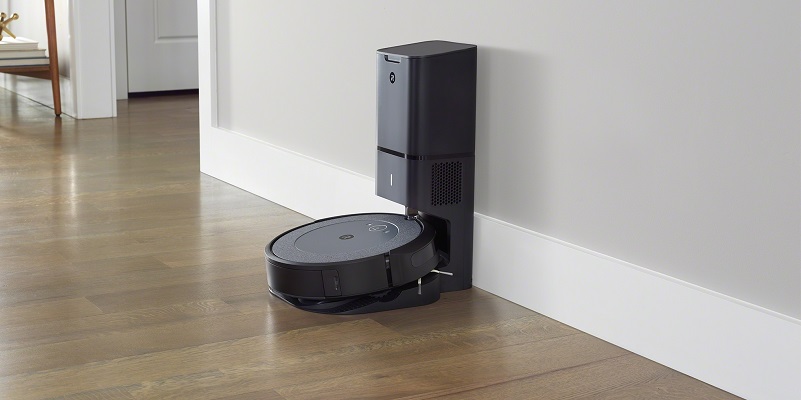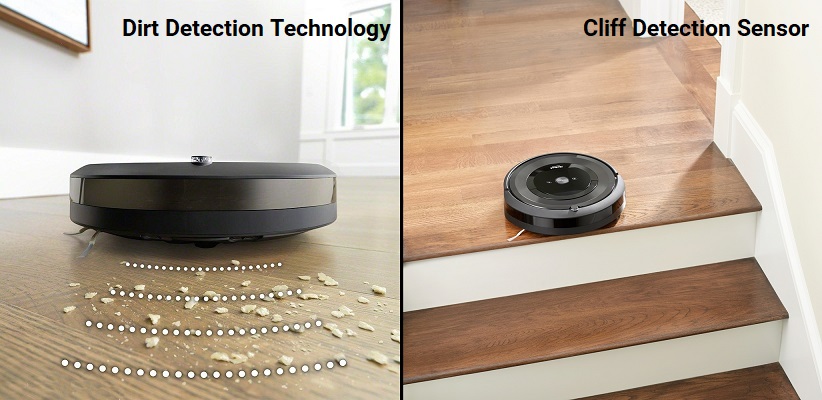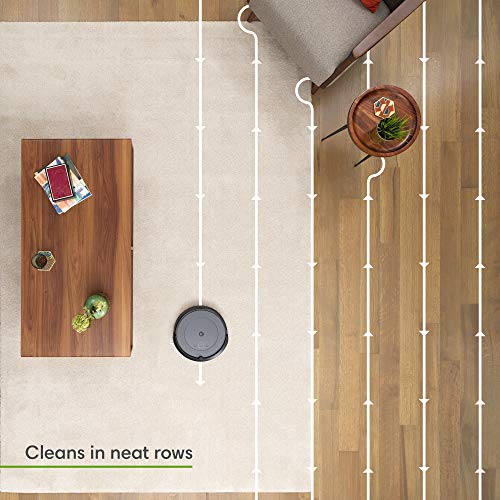If you’ve done any research on robot vacuums, you might know there are a dizzying number of different models. Today, I’m focusing on just the Roomba i3 and the Roomba e5. Let’s go over their differences one by one.
Contents
- 1 What’s different between the Roomba e5 and i3?
- 2 Difference 1: The Roomba i3 has smart navigation, the Roomba e5 does not.
- 3 Difference 2: The Roomba i3 is able to “recharge and resume”, the e5 is not.
- 4 Difference 3: The Roomba i3 is compatible with iRobot’s self-emptying base, the e5 is not.
- 5 What about the Roomba i3+?
- 6 Similarity 1: Both have dual anti-tangle brushrolls.
- 7 Similarity 2: both have dirt detection and cliff detection.
- 8 Similarity 3: Both work with WiFi, the iRobot app, and voice commands.
- 9 Conclusion:
What’s different between the Roomba e5 and i3?
The differences between these robot vacuum are that the Roomba i3 has smart navigation, is able to recharge and resume, and can be upgraded to a self-emptying version of itself. On the other hand, the e5 has random navigation, does not support recharge and resume, and does not work with any self-emptying docking stations.
Let’s look at each difference in detail.
The Roomba i3 is able to navigate your home logically, meaning that it vacuums in more or less straight lines and steers around obstacles like a human being would. This is in contrast to the e5’s random “bump and turn” style navigation, where it roams around randomly until your entire floor is covered.
Smart navigation is a pretty big deal, and for this reason alone, I’d recommend picking up the i3 over the e5.
Difference 2: The Roomba i3 is able to “recharge and resume”, the e5 is not.
Because it knows where it is in relation to your home, the i3 is has the “recharge and resume” feature usually only found on high end robot vacuums.
When the i3 senses a depleted battery during a cleaning session, it will remember where it has cleaned, go back to its docking station, recharge its batteries, and then resume cleaning where it left off. The e5 can’t do this.
This is another fairly significant feature that I’d recommend most people go for when making their purchase decision. I was very surprised to find iRobot include this feature when they announced the i3. It makes the choice between these two vacuums pretty easy.

Difference 3: The Roomba i3 is compatible with iRobot’s self-emptying base, the e5 is not.
The Roomba i3 comes in another flavor called the i3+. This is the more complete package which includes a self-emptying docking station called the home base.
As you probably guessed, the home base makes it so you don’t have to empty the Roomba’s dustbin manually. Instead, the dust is sucked into the disposal bag located in the home base at the end of a clean.
While this is nice, it does mean that you have to buy replacement disposal bags from time to time. The disposal bags are not reusable.
If you’re not interested in a self-emptying home base, then this difference probably doesn’t matter to you. To be clear, the i3 does not come with a self-emptying base. Only the i3+ does.
What about the Roomba i3+?

The i3+ and the i3 are identical vacuums. The only difference is that the i3+ comes with a clean base included but the i3 does not. The i3+ equals the i3 “plus” the home base.
Back to the e5 and the i3, let’s take a look at their similarities.
Similarity 1: Both have dual anti-tangle brushrolls.
The e5 and i3 are both equipped with two anti-tangle brushrolls. On paper, it might not sound like a big deal, but in practice, it is. The dual brush rolls are really quite effective at preventing tangles in the Roomba’s brushes.
Any hair that gets in the path of the Roomba usually ends up in the dustbin, and the occasional runaway hair will get rolled to the side of the brushroll as it rotates, which can easily be cleaned out. This saves a ton of time when it comes to maintenance.
Similarity 2: both have dirt detection and cliff detection.
All modern Roombas have “dirt detect” technology, which means they will spend a little more time on problematic areas of your home, ensuring a thorough vacuuming.
Another feature common to all Roombas is the cliff detection system. Both the i3 and e5 can tell when they are about to fall off a ledge and will prevent themselves from doing so. This is standard on most robot vacuums on the market.

Similarity 3: Both work with WiFi, the iRobot app, and voice commands.
The Roomba i3 and e5 both have WiFi support. This means that you can connect the vacuum to your home network. Using the app, you can then control the Roomba from anywhere. You can even schedule the Roomba to run at specific times.
Both are also compatible with smart home assistants like Alexa, Siri, or Google assistant. While convenient, I haven’t actually found this feature that useful since neither model is capable of room-specific cleaning.
Conclusion:
There are quite a few meaningful differences between the Roomba e5 and i3. Given their differences above, I think it’s clear to say that the i3 is superior. The Roomba i3 is better than the e5 in just about every way, except for price.
The i3’s ability to navigate your house logically and efficiently alone is worth the extra cost. Add recharge-and-resume to the mix, and picking the i3 over the e5 becomes a no-brainer. The i3 is also the newer vacuum of the two.
Every home is different, but I suspect the i3 will perform better than the Roomba e5 in pretty much every home. In today’s showdown, the clear winner is the Roomba i3+.



